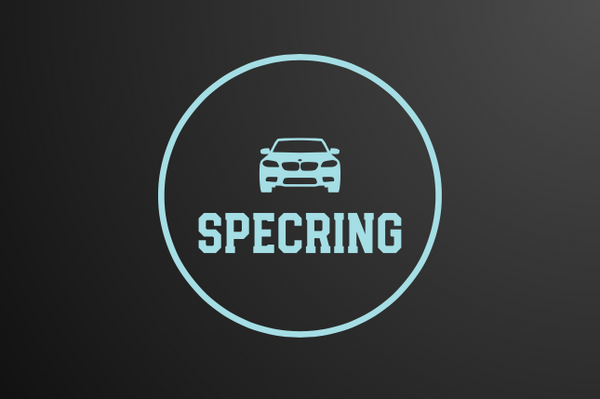When it comes to BMW performance modifications, carbon fiber is a game-changer. From spoilers to splitters, carbon fiber parts enhance both aesthetics and functionality. One of the most impactful upgrades is a carbon fiber hood. But how does a carbon fiber hood affect a BMW’s aerodynamics? Let's dive into the science behind this lightweight upgrade and why it’s a must-have for enthusiasts.
1. The Role of a Hood in Aerodynamics
The hood isn’t just a cover for your engine—it plays a crucial role in a car’s weight distribution, airflow, and stability. A heavy, factory steel hood can affect handling, while a carbon fiber hood reduces weight and improves front-end responsiveness. But beyond weight savings, how does it influence aerodynamics?
Key Aerodynamic Considerations:
- Weight Reduction: Less weight on the front axle means improved steering precision and balance.
- Airflow Optimization: Many carbon fiber hoods come with heat extraction vents, reducing engine bay temperatures and enhancing downforce.
- Drag Reduction: A well-designed carbon fiber hood can help channel air smoothly over the body, reducing turbulence and lift.
2. How Carbon Fiber Reduces Drag
One of the most overlooked benefits of a carbon fiber hood is its ability to minimize drag. A smoother, more contoured hood guides air efficiently over the car instead of creating resistance.
How It Works:
- Stock steel hoods often have design limitations due to weight constraints. This results in a shape that may not be aerodynamically optimized.
- Carbon fiber hoods, especially those with sculpted contours and vents, allow air to flow seamlessly over the body, reducing wind resistance.
💡 Fact: In high-performance applications, reducing drag can improve acceleration and top speed.
3. Heat Management: The Hidden Advantage
BMWs, especially M-Series models, are known for their high-performance engines that generate significant heat. Managing engine bay temperatures is crucial for consistent performance and longevity.
How a Carbon Fiber Hood Helps:
✅ Heat Extraction Vents – Directs hot air away from the engine bay, preventing heat soak.
✅ Lightweight Material – Unlike metal, carbon fiber doesn’t retain heat, keeping temperatures lower.
✅ Better Air Circulation – Reducing under-hood heat increases efficiency and power output.
Example: The BMW F80 M3 benefits from a vented carbon fiber hood, which enhances cooling and improves engine efficiency during spirited driving.
4. Downforce & Stability at High Speeds
Downforce is essential for keeping a BMW stable at high speeds. A carbon fiber hood with aerodynamic shaping can create better airflow dynamics, increasing front-end downforce.
- Factory hoods can contribute to lift at high speeds, making the car feel less planted.
- Aftermarket carbon fiber hoods, such as those with power domes or scoops, improve stability by creating a low-pressure zone over the front end.
Result: Your BMW stays glued to the road, improving handling and cornering performance!
5. Weight Savings: How Much Does It Really Help?
Stock BMW hoods are usually made from steel or aluminum, which adds unnecessary weight. Here’s how much you can save:
| Material | Average Hood Weight |
|---|---|
| Steel Hood | 40-50 lbs. |
| Aluminum Hood | 25-30 lbs. |
| Carbon Fiber Hood | 10-20 lbs. |
This reduction in weight significantly improves acceleration, braking, and fuel efficiency.
6. Real-World Performance Gains
Case Study: BMW M3 (E92) Carbon Fiber Hood Upgrade
An E92 M3 owner swapped out the stock hood for a vented carbon fiber hood, and here’s what changed:
✅ Weight Reduction – Shed 30 lbs., improving cornering dynamics.
✅ Better Cooling – Lowered engine bay temperatures by 15%.
✅ Reduced Drag – 5% improvement in high-speed stability.
✅ Enhanced Looks – Aggressive styling, making it stand out.
If you're tracking your BMW, this mod is a must-have for shaving lap times!
7. Choosing the Right Carbon Fiber Hood
Not all carbon fiber hoods are created equal. When shopping for one, consider:
✔ OEM Fitment – Ensures easy installation with no modifications.
✔ Quality of Carbon Fiber – Look for pre-preg carbon fiber for the best strength-to-weight ratio.
✔ Vented vs. Non-Vented – If performance is a priority, go for a vented hood.
✔ Clear Coat Finish – Protects against UV damage and fading.
8. Installation & Maintenance Tips
Installation:
- DIY-Friendly – Most carbon fiber hoods are bolt-on replacements.
- Weight Consideration – Ensure hood struts can handle the lighter weight.
- Adjustments – Some aftermarket hoods may need minor alignment tweaks.
Maintenance:
- Use a UV-Protectant Spray – Prevents fading and discoloration.
- Hand Wash Only – Avoid harsh chemicals that can damage the clear coat.
- Check for Loose Fittings – Ensure secure latches and fasteners over time.
Is a Carbon Fiber Hood Worth It?
If you're serious about performance, aerodynamics, and aesthetics, a carbon fiber hood is one of the best upgrades you can make for your BMW.
✔ Reduced weight for better handling.
✔ Improved aerodynamics with drag reduction.
✔ Enhanced cooling for engine efficiency.
✔ Aggressive styling that turns heads.
Upgrade your BMW with a carbon fiber hood today and experience the difference!
Shop BMW Carbon Fiber Hoods at Spec-Ring – Get exclusive deals now!
FAQ (Schema-Optimized for SEO)
Q: Does a carbon fiber hood really improve performance?
A: Yes! Carbon fiber hoods reduce weight, improve cooling, and enhance aerodynamics, leading to better overall performance.
Q: Can I install a carbon fiber hood myself?
A: Yes, most carbon fiber hoods are direct bolt-on replacements and require minimal effort to install.
Q: Do carbon fiber hoods need special maintenance?
A: Yes, they require UV protection, gentle cleaning, and occasional re-coating to maintain their finish.

